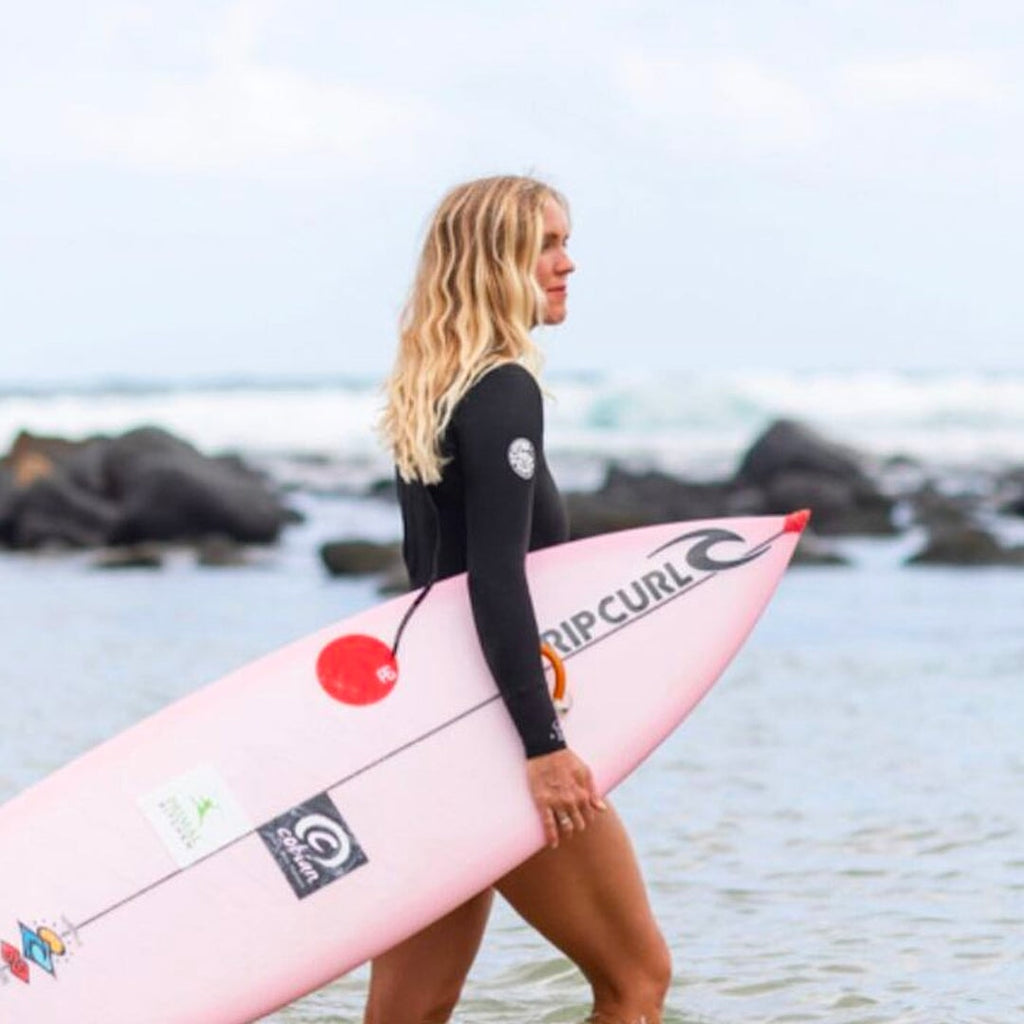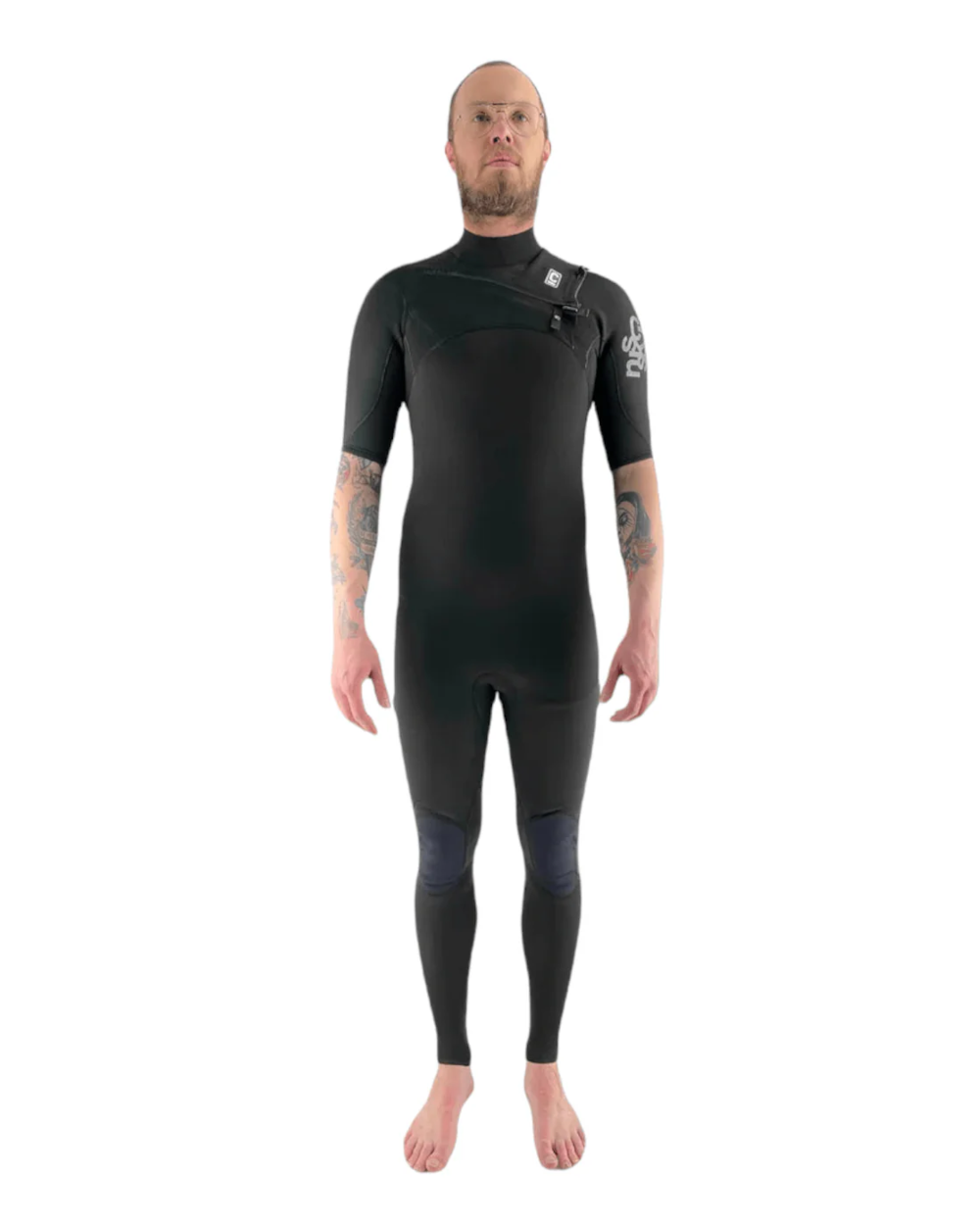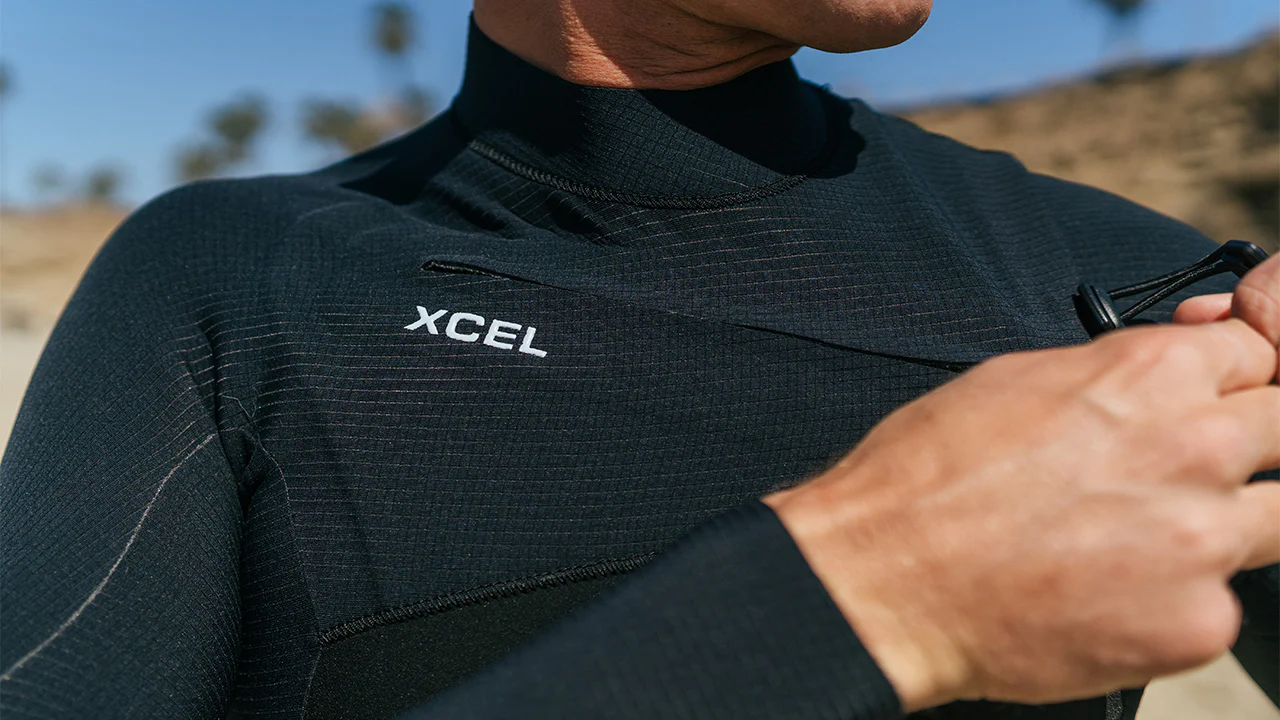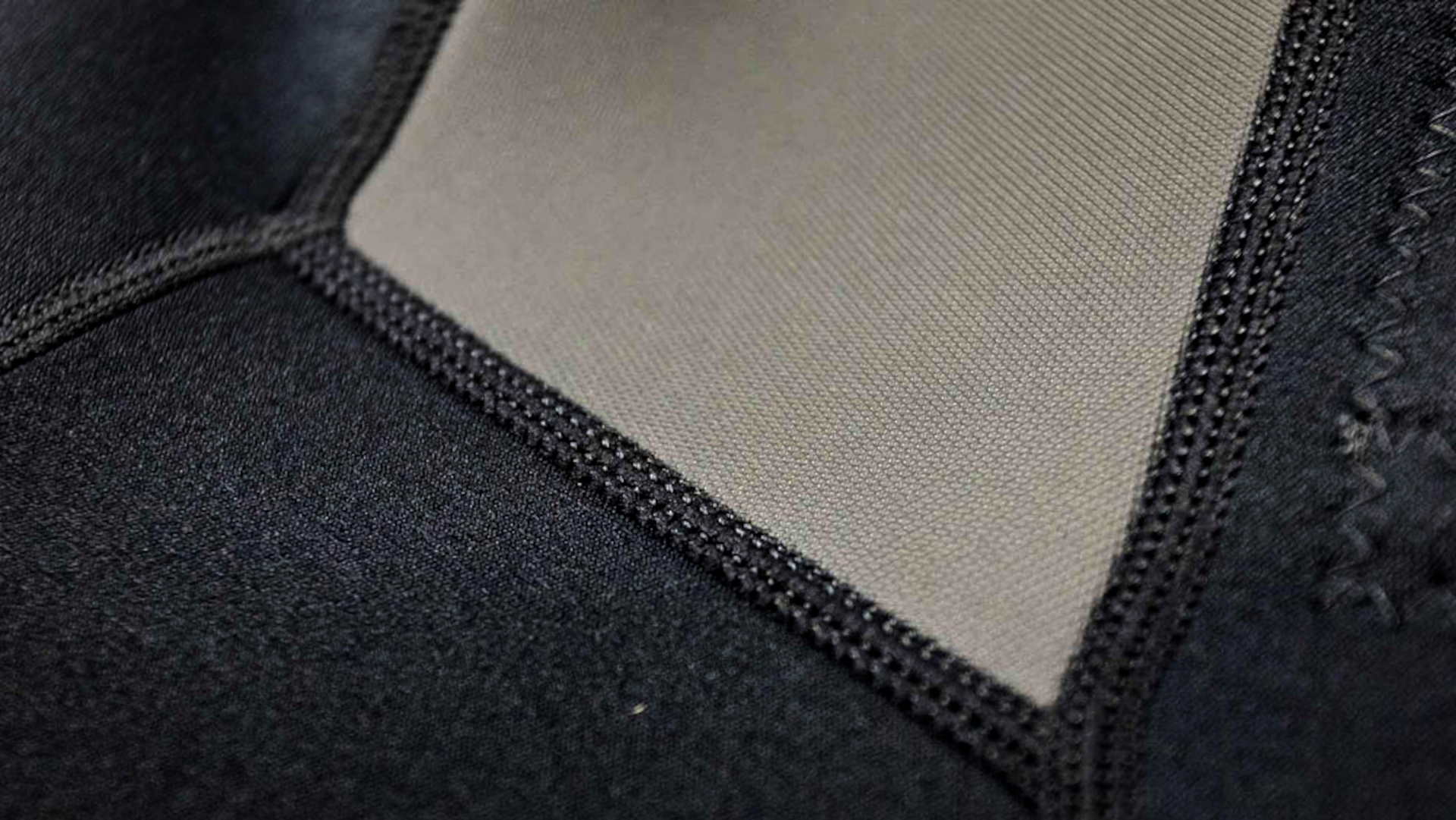
Wetsuits are a like a second skin - made out of neoprene, they are designed to keep you warm while surfing. They act as an insulating layer, catching and retaining heat while minimising windchill . When wearing a wetsuit, a thin layer of water sits between your skin and the suit which is then heated up by your body, keeping you warmer for longer. The water temperature is the first thing you need to consider when choosing your suit. Ask yourself “where and when am I going to surf?”.
If you want to stay in the water longer than about 20 minutes in the winter months, a 4/3 suit is definitely the way to go. Extra accessories such as booties, hoods and gloves can also be a good idea if you tend to feel the cold. For summer in Victoria, usually a short arm steamer, 2/2 Spring Suit on the hottest days, or a 2/2 or 3/2 in a Full Suit or Short Arm steamer to take you through spring/autumn.
you need to consider when choosing your suit.
MENS, WOMENS & CHILDREN STYLES
As with clothing, Men's and women's surfing wetsuits are designed differently to accommodate the physical differences. Smaller waistlines, wider hips, and shorter torsos results in suits that can fit women better, provide more comfort, and allow for greater mobility.
It's worth noting that while men's and women's wetsuits are designed differently, individuals should choose the wetsuit that fits them best, regardless of their gender. Many of our female customers find that men's wetsuits are a better fit on them. Ultimately, the best wetsuit is the one that provides a comfortable, flexible fit and keeps you warm in the water - so feel free to try both.
Wetsuits for children are a great way to protect them from the harsh UV rays and allow them to maximise their time in the water (even in colder weather).
In store we recommend what we call a "functional fit" for children. The wetsuit will be ideally fitted enough that it will function reasonably well, but with enough growing room that they'll get a decent life span out of it.
THE MAIN WETSUIT STYLES

FULL SUIT / STEAMER
A steamer/full body wetsuit covers the whole body to ankles and wrists. For surfers a full body wetsuit offers optimal insulation, flexibility, and durability. Mainly constructed from neoprene, it provides warmth by trapping a thin layer of water against the skin, maintaining body heat in cold waters. Its snug fit reduces water entry, keeping the wearer dry and agile, crucial for surfing's dynamic movements. Seam sealing enhances water resistance, preventing flushing. The suit's thickness varies based on water temperature and personal preference, balancing warmth and mobility. Additional features like reinforced knee pads and chest/back panels offer protection against abrasions from boards and waves. Overall, it's a vital tool for surfers, extending their time in the water comfortably.
SHOP STEAMER

SHORT SLEEVE STEAMER
A great style for spring/summer/autumn in Victoria. A short arm steamer wetsuit designed for surfers combines flexibility, comfort, and performance. The suit goes to the ankles but cuts off at the elbows, it allows unrestricted arm movement, essential for paddling and maneuvering on the board. Constructed from high-quality neoprene, it offers insulation and buoyancy while maintaining a lightweight feel. Seam construction minimizes water entry, maximizing warmth and comfort. The suit's streamlined design reduces drag in the water, enhancing speed and agility. It provides protection against abrasions and UV exposure, crucial for long hours in the surf. Overall, the short arm steamer wetsuit is a versatile choice for surfers seeking comfort and functionality in moderate water temperatures.
SHOP SHORT SLEEVE

SPRING SUIT
A spring or springer wetsuit offers lightweight coverage and enhanced mobility in moderate water temperatures. Its sleeveless design and short legs (cut off at the knees and elbows) provide freedom of movement for paddling and manoeuvring on the board. The suit's streamlined profile reduces drag, optimising speed and manoeuvrability. While offering moderate insulation, it also provides protection against abrasions and UV exposure. Overall, the spring/springer wetsuit is a versatile option for surfers seeking comfort and flexibility during warmer surfing conditions.
SHOP SPRING SUIT

VESTS & JACKETS
A jacket/vest wetsuit serves as a versatile accessory for surfers, offering targeted insulation and protection in varying conditions. Can be simply worn with shorts on the warmest summer days. Its design provides freedom of movement while adding warmth to the core, crucial for prolonged sessions in cooler waters. The construction withstands the rigours of surfing, providing abrasion resistance and thermal insulation. Upper vests or jackets minimise wind chill - while allowing maximum freedom for your legs. Additionally, some models feature integrated buoyancy aids, enhancing safety in rough surf. Whether worn alone or layered with other wetsuit components, the jacket/vest wetsuit is a valuable asset for surfers seeking adaptability and performance.
SHOP VESTS AND JACKETS

WETSUIT FIT
Like anything you wear, each wetsuit brand has slightly different sizing. You will find that some brands fit your body shape better than others. If possible it's always better to try on a wetsuit before you buy it. If you have never owned a wetsuit before, we recommend trying 2-3 brands / suits to get a comparison.
The good news is, once you find a brand that fits you well you should be able purchase their suits year after year and still get that good fit. Each wetsuit brand tends to cut their suits from the same fit model each season. So if a Large in one brand has fit you well previously, chances are a Large in their current range will fit you well too.
- NOTE -
Your wetsuit should to be fitted with minimal bunching of material.
The suit should be fairly tight at the neck, wrists and ankles (or elbows and knees if you’re in a spring suit) to prevent water flushing through the suit.
Try and get a suit that sits flush to your skin all over your body. Make sure you have the right amount of length in the torso, enough length in the limbs & enough width across the chest.
The suit should fit snuggly with out having to stretch too much when you have it on. Stretching into a suit that is too small will put excessive strain on the seams and neoprene material. A suit that is too large will let in too much water, allow water to pool inside and cause abrasion where excess material bunches up (wetsuit rash).
WETSUIT THICKNESS
The neoprene fabric wetsuits are constructed out of acts as insulation against the cold water. As a general rule, the thicker the neoprene material, the warmer the wetsuit. However, a thicker wetsuit will add weight & be more restrictive to move in.
You will see wetsuits on our online store described as:
2/2, 3/2, 4/3, 5/3 or 5/4.
These numbers refer to the wetsuits neoprene thickness in millimeters.
For example, a 3/2 suit has 3mm of neoprene in the torso and legs, then 2mm panels of neoprene in areas of the arms / shoulders. This combination keeps the majority of you body covered in thicker 3mm rubber, while giving you a little more flexibility in the arms for paddling.
In general, spring suits are 2/2, summer/spring/autumn suits are 2/2 or 3/2 and winter suits are 4/3 (or 5/4 for those desperately freezing days!)
STYLE OF SUIT |
TORSO TO LEG/ARMS THICKNESS (MM) |
|---|---|
| Spring Suit | 2/2 |
| Summer/Spring/Autumn Suits | 2/2 or 3/2 |
| Winter Suits | 4/3 |
| Arctic Winter Suits | 5/4+ |
THE ZIPPER
Zips are placed in different areas on wetsuits for ease getting in and out. There are three main wetsuit entry systems (or common zippers placements) - each with pros and cons. The most important thing is to try them on and see how easy it is to get into each & how comfortable / flexible they are. That way you'll know which one suits you best.

BACK ZIP
The back zip has been the standard wetsuit entry system since wetsuits were invented back in the 60s. A long zipper down the back of the suit provides a large opening / entry into the suit. This makes back zip wetsuits the easiest suit design to get in and out of.
The long zip does create an area of limited flex down the back however it also allows more opportunity for cold water to seep in through the zip teeth. More recently (in the surf world anyway) their popularity has waned in favor of chest zip suits.

CHEST ZIP
The chest zip is the most popular entry system for surfing wetsuits. When unzipped, you climb in through the top of the suit. While some people find chest zip wetsuits a little more difficult to get into at first, they definitely get easier with practice. The advantage of the chest zip design is greater flexibility through the back. You'll also find that there is less likelihood of getting flushes of cold water in through the suit when you take a tumble. Most people find that chest zips are also more comfortable to wear.

ZIPPERLESS
Recently most wetsuit companies have started making zipperless wetsuits, where you enter through the neck area (in a fairly similar fashion to chest zips). The benefits of having no zip at all is less restriction / more flexibility. Though most zip free suits tend to get a little bulky across the chest in thicker wetsuits.
SEAMS AND STITCHING
As water temperature gets colder, another important feature to consider in your suit is the way that it is constructed ie. the seams.
All suits need to be stitched together in some way so that the material fits the contours of your body. This usually means that pieces of neoprene material are sewn together. Unfortunately this stitching does create small holes that cold water can leak through. There are a few different ways wetsuit companies have come up with to seal seams / prevent these leaks. Here is an overview of the different types of seams you'll commonly see on wetsuits. Most suits have one, or a combination of the following.
OVERLOCK STITCH
Pretty much obsolete now, but can still be found in some entry level / budget suits. It has big stitches on the inside of the wetsuit where neoprene pieces are sewn together. This stitching is proud / sticks out, which can be uncomfortable compared to other ways of constructing wetsuits. It is a cheaper and durable way of building suits..
FLATLOCK STITCH
As the name suggests, flatlock stitching sits flat / flush to the surface of the neoprene. It's a zig-zag, close stitched seam that is comfortable and flexible. Not fully watertight, it does allow water to pass through each seam and as a result is generally only used for suits that will be used in warmer water.

GBS - GLUED & BLIND STITCHED
Here the neoprene seams are glued together and then blind stitched. Blind-stitching is when the needle never penetrates the neoprene completely. As a result no small holes are created - making you suit relatively water tight. This type of seam makes a wetsuit significantly warmer and is found in the majority of wetsuits (with or without some additional seam reinforcement).

CRITICALLY TAPED / FULLY TAPED
Great for winter suits and premium suits.
Some GBS suits are critically taped - where areas of high stress in the suit are reinforced using neoprene tape. This taping adds to the durability of the suit and is essentially and additional way of making a seam watertight.
More expensive wetsuits are often fully taped - where all seams in the suit are reinforced with neoprene tape. This increases the durability of the suit and makes the seams more watertight - further adding to it's ability to keep you warm.


WELDED SEAMS / LIQUID TAPING
Great for winter suits and premium suits.
Welded Seams / Liquid Taping is another way to join neoprene pieces together and make it watertight. Welded seams are when neoprene pieces glued together, then a rubber strip is stuck down over the top ( this can be on the outside or inside of the suit). This is the best way to make a suit watertight and helps to keep you warm even in the most frigid conditions. Welded seams also allow seams to stretch with the other materials of the suit. This construction method is more labour intensive an as a result - welded seams are usually only found in premium and winter suits.

Thermal linings
In recent years, predominantly in colder water suits, thermal linings are being added to the inside of wetsuits. A lot of these look quite colourful & have pseudo technical sounding names - ultimately these materials are some type of polyester or polypropylene. These thermal linings are great because they provide extra insulation, often make suits more comfortable to wear and even help your suit dry faster.

BUY YOUR WETSUIT
WHAT NEXT? - You can view our range of wetsuits by clicking through the wetsuit and apparel section in the menu of the button below. We recommend trying 2 to 3 different types of wetsuits to get the correct fit. We are Melbourne's wetsuit specialists and provide one of the best ranges of surfing wetsuits in Victoria. Located in the suburbs of Thornbury and Newport. Our knowledgeable and friendly staff can help you find the perfect wetsuit for your needs and budget. Check the location and availability of selected styles at our ONLINE STORE.


